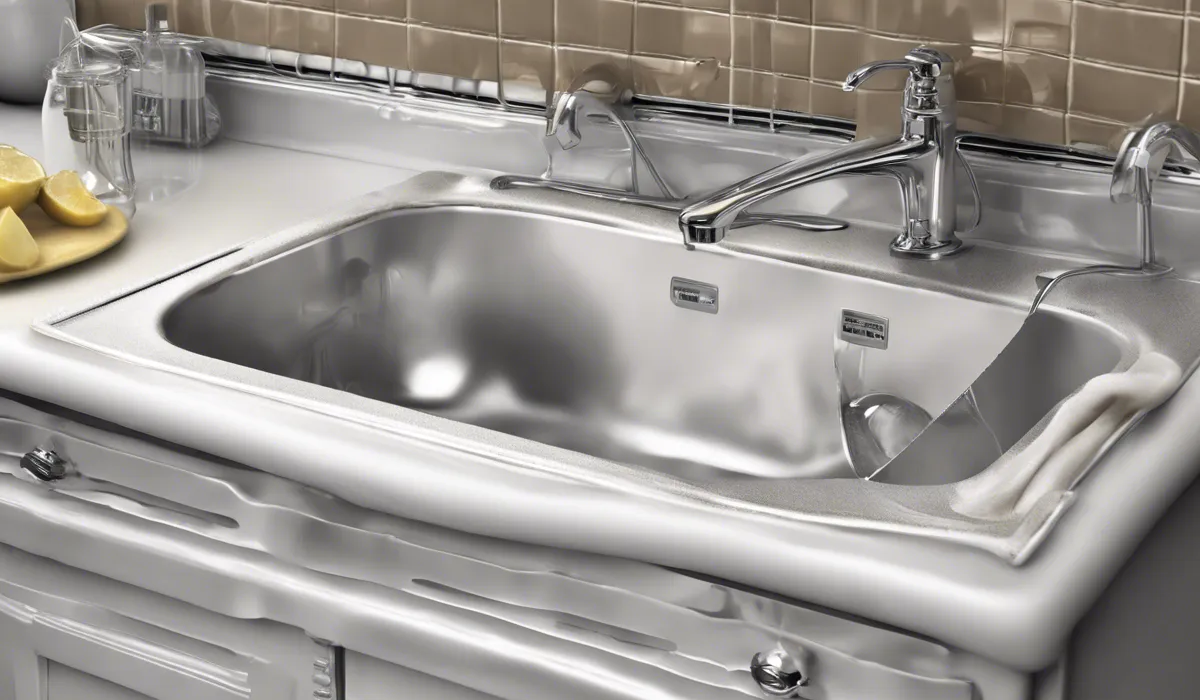How to Live Without a Dishwasher: Sparkling Tips & Tricks
To live without a dishwasher, hand wash dishes promptly after use with hot, soapy water. Use a basin for soaking, scrub with a brush or sponge, rinse with clean water, and air dry or towel dry. Organize your space to streamline the process and save time.
Preparing for a Dishwasher-Free Lifestyle

Assessing Kitchen Space for Efficient Manual Dishwashing
Starting a dishwasher-free life begins with evaluating your kitchen layout. Consider the space near your sink; this will be your primary dishwashing zone.
Ensure you have enough room to stack dishes, place a basin for soaking, and have a designated area for drying.
Think about the flow of your kitchen activities to minimize the distance between dirty dishes and their cleaning destination. This setup should aim to reduce the time and effort needed to wash dishes manually.
Investing in Dishwashing Essentials
Equip yourself with the right tools for the task. A large, deep sink or a sturdy basin is essential for soaking and scrubbing. Consider a high-quality dish rack that maximizes vertical space and a separate utensil holder.
Quality cleaning supplies such as sponges, brushes, and eco-friendly detergents will make the job easier and more effective. These investments will streamline your dishwashing process, making it less of a chore.
Organizing Kitchenware for Ease of Cleaning
Arrange your dishes, glasses, and utensils in a way that makes them easy to access and simple to clean. Group like items together and keep the most used items within reach.
This not only speeds up the washing process but also helps in putting things away quickly after they are dry. Utilizing organizers and shelves can help in keeping counters free from clutter.
Establishing a Routine to Maintain Cleanliness and Order
Create a habit of washing dishes right after use. This prevents food from drying and sticking, which makes cleaning more challenging. If you have family members, involve them in the routine to share the workload.
Set specific times for dishwashing, such as after each meal, to avoid pile-ups. A consistent routine can transform what seems like a daunting task into a manageable part of your daily life.
Effective Hand-Washing Techniques

Pre-rinsing and Scraping off Food Residues
Before washing, always pre-rinse your dishes under running water. Use a scraper or a brush to remove any leftover food.
This step makes the actual washing much quicker and easier, as the majority of the residues will already be gone. It’s an essential habit that ensures your dishes come out clean without excessive scrubbing.
The Double Sink Method or Single Sink/Basin Strategy
If you have a double sink, use one side to wash and the other to rinse. This system keeps the process orderly and efficient.
If you only have one sink, use a basin to create a two-step system. Wash the dishes in the basin and then rinse them under the tap. This method saves water and keeps your sink available for other uses.
Proper Water Temperature for Different Types of Dishes
Use hot water for greasy dishes as it breaks down oils more effectively. However, for delicate items like glassware, cooler water is better to prevent cracking.
Adjusting the water temperature according to the dish type is crucial for both cleanliness and preserving your kitchenware.
Detergent Use and Eco-Friendly Alternatives
Choose a detergent that is tough on grease but gentle on your hands. If you prefer natural solutions, consider using baking soda or vinegar, which are effective and environmentally friendly.
These alternatives are not only better for the planet but can also save you money in the long run.
Systematic Washing Order: From Least to Most Soiled Items
Start with the least dirty items, like glasses and cups, and progress to plates and cutlery.
Save the pots and pans for last as they are usually the most soiled. This method prevents you from spreading grease and food particles to cleaner items and reduces the need for changing the wash water frequently.
Thorough Rinsing and Preventing Water Spots
Rinse dishes thoroughly to remove any soap residue. To prevent water spots, especially on glassware, use a mixture of vinegar and water as a final rinse.
This small step can make a big difference in the appearance of your dishes and eliminate the need for extra polishing.
Drying and Storage Solutions

Air-Drying vs. Towel Drying: Pros and Cons
Air-drying is the most hygienic method as it minimizes handling and the potential for bacterial transfer.
However, it requires space for a drying rack or mat. Towel drying is faster and can be done if you have limited space, but ensure you use a clean towel to avoid contamination.
Creative Use of Space for Drying Racks and Mats
If you lack counter space, consider over-the-sink drying racks or roll-up mats. Wall-mounted racks are another great option to free up counter space. Being creative with your drying solutions will keep your kitchen functional and organized.
Sanitizing Dishes and the Importance of Ventilation
Every so often, it’s important to sanitize your dishes. You can do this by using hot water or a diluted bleach solution.
Adequate ventilation is also crucial to prevent mold and mildew growth, especially in humid environments. Open windows or use a fan to circulate air and speed up the drying process.
Integrating Dishwashing into Daily Routines for Efficiency
Make dishwashing a seamless part of your daily activities. Clean as you cook to reduce the load after meals. If you have a family, assign dishwashing duties to different members on different days. This can teach responsibility and teamwork.
Tips for Avoiding Clutter and Managing Large Cookware and Utensils
For large items like pots and baking trays, wash them immediately after use to avoid clutter. Use hooks or hanging racks to store these bulky items, which can also serve as a decorative element in your kitchen.
Keeping on top of these dishes prevents them from becoming overwhelming and ensures your kitchen remains a pleasant environment.
FAQs About Living Without a Dishwasher
What is the best way to hand wash dishes efficiently?
To hand wash dishes efficiently, clean them promptly after use with hot, soapy water, scrub with a brush or sponge, and rinse with clean water before air drying or towel drying.
How can I dry dishes without a dishwasher?
Dishes can be dried without a dishwasher by either letting them air dry on a rack or by using a clean towel to towel dry them after washing and rinsing.
What is the best method to organize dishwashing space?
Organize your dishwashing space by keeping cleaning tools accessible, designating areas for washing, soaking, rinsing, and drying, and storing cleaning products conveniently.
Is it necessary to rinse dishes with hot water after washing?
It is recommended to rinse dishes with clean water, which can be hot or warm, to remove soap residue and ensure they are clean before drying.
Can soaking dishes make hand washing easier?
Yes, soaking dishes in a basin with hot, soapy water can help loosen food particles and make hand washing easier and quicker.
Final Thoughts
Living without a dishwasher is manageable by washing dishes immediately after use. Hot, soapy water, a basin for soaking, and thorough scrubbing are essential.
Rinse with clean water and choose between air drying or using a towel. An organized kitchen space enhances efficiency and reduces the time spent on this chore.





